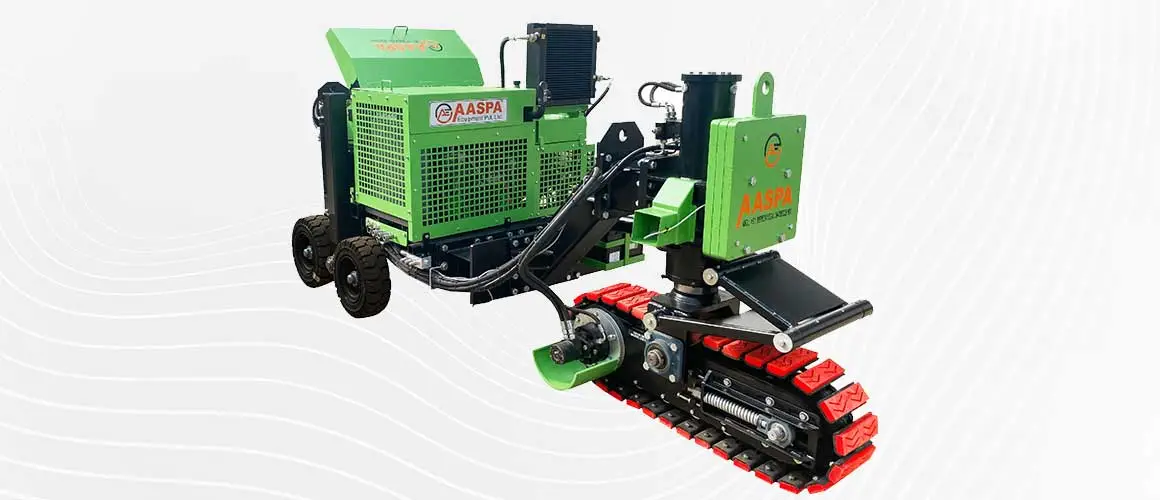10 Common Challenges in Pavement Projects and How Curb Paver Machines Solve Them

1. Inconsistent Curb Quality
One of the most common issues in pavement projects is achieving consistent curb quality, which affects the overall appearance and structural integrity. Hand-finishing methods are often time-consuming and prone to variability, leading to inconsistent results.
Curb paver machines are designed to automate the curb-setting process, ensuring uniformity across long stretches of pavement. Their advanced control systems allow operators to adjust parameters like speed, pressure, and material flow, which results in consistent curb profiles. This precision reduces the chances of defects and ensures that the curb meets both aesthetic and functional requirements.
2. Labor Shortages and Skilled Workforce
The demand for skilled labor in the paving industry often exceeds supply, making it difficult to staff projects with experienced workers. This shortage can lead to delays and increased costs.
Curb paver machines reduce the reliance on manual labor, allowing fewer skilled workers to achieve the same, if not better, results. With automated systems, these machines can operate with minimal oversight, allowing workers to focus on other critical tasks. This increases efficiency and reduces the strain caused by labor shortages.
3. Time Constraints
In large-scale pavement projects, time is always of the essence. Delays in one part of the project can ripple through and affect other stages, ultimately pushing back the completion date and increasing costs.
Curb paver machines speed up the paving process by automating the curb installation. These machines can lay down long stretches of curb at a rapid pace, reducing the time spent on this task. With increased productivity, the overall timeline for the project shortens, allowing for timely completion.
4. Material Wastage
Wastage of materials such as concrete and asphalt can inflate project costs. Irregular mixing, improper curing, and inconsistent placement contribute to high wastage rates, leading to inefficiencies.
Curb paver machines are equipped with advanced material management systems that ensure precise control over the material usage. These machines are designed to minimize material waste by consistently placing the exact amount needed, reducing overuse and ensuring cost-efficiency.
5. Environmental Concerns
Paving projects often have an environmental impact, particularly when materials are not handled or disposed of properly. Runoff from untreated concrete or asphalt can contribute to pollution.
Modern curb paver machines are designed to be more eco-friendly, with features that minimize material spillage and improve efficiency. Some machines are equipped with dust suppression systems and better handling mechanisms for waste, reducing environmental harm. Furthermore, the precision they offer minimizes the need for excessive material use, promoting sustainability.
6. Uneven Terrain and Surface Preparation
Preparing the surface for paving can be challenging, especially when dealing with uneven terrain or subgrade issues. Traditional methods of grading and preparing the subbase are often inadequate, leading to pavement deterioration over time.
Many curb paver machines are equipped with adjustable tracks and leveling systems, which allow for better handling of uneven surfaces. The machines can adapt to the terrain, ensuring a smooth and stable foundation for curb installation. This results in higher durability and long-term performance of the pavement.
7. Weather Conditions
Adverse weather conditions, such as rain, extreme heat, or cold, can significantly affect the quality of pavement work. These conditions can cause delays, impact material setting, and even lead to failures in the finished product.
Curb paver machines are designed to handle a variety of weather conditions. Many are equipped with features such as heated molds or insulated hoppers to prevent premature curing in cold weather, while others come with covers to protect materials from rain or extreme temperatures. This flexibility ensures consistent results, regardless of the weather.
8. Inaccurate Slope and Alignment
Pavement projects require precise alignment and slope to ensure proper drainage and functionality. Manual methods of setting curb slopes and alignments are prone to errors, which can cause pooling of water, pavement damage, and poor drainage.
Curb paver machines feature advanced GPS and laser-guided systems that ensure accurate alignment and slope. These systems automatically adjust the machine’s position to maintain the correct curb elevation and slope throughout the process. The result is better drainage, improved road safety, and longer-lasting pavements.
9. Cost Overruns
Pavement projects can quickly become expensive due to unexpected issues, inefficiencies, or rework. Cost overruns are often caused by delays, excessive labor costs, and the need to redo parts of the project.
With curb paver machines, the risk of cost overruns decreases. The automation of curb-setting reduces the need for rework and minimizes human error. Additionally, the speed and material efficiency of these machines lower labor and material costs, ultimately improving the budget control of the project.
10. Safety Hazards
Construction sites are inherently hazardous, with workers exposed to risks from heavy machinery, materials, and the work environment. In paving projects, the manual setting of curbs can expose workers to injuries, especially when dealing with large concrete blocks or complicated machinery.
Curb paver machines enhance safety by reducing the need for manual labor and minimizing the handling of heavy materials. These machines are equipped with safety features such as automatic shutoffs, protective shields, and ergonomic controls, ensuring that workers are less exposed to potential hazards. The reduced need for workers to be on-site near moving machinery further enhances safety.
Conclusion
Pavement projects, while essential to infrastructure development, are fraught with challenges that can delay progress, inflate costs, and compromise the quality of the final product. Curb paver machines offer a robust solution to many of these challenges.
From improving quality consistency and speeding up the work process to reducing material wastage and minimizing safety risks, these machines significantly enhance the efficiency and effectiveness of pavement projects.
As the industry continues to evolve, curb paver machines will undoubtedly remain a key player in shaping the future of pavement construction.
Still, want to know more about it? – Just drop us a line at info@aaspaequipment.com
